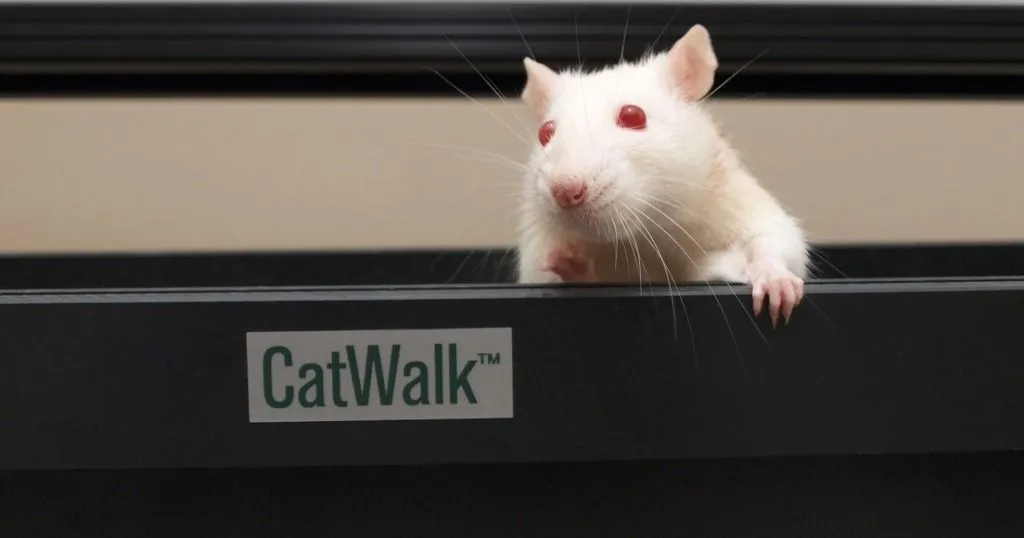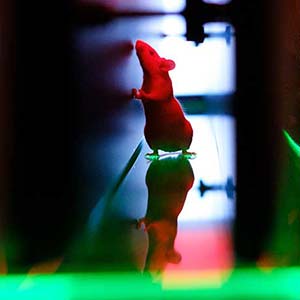A new sensory and motor scale for the CIA arthritis mouse model
Dr. Bonnefont and her colleagues at IRMB in France just recently proposed a new ArthriSM scale to predict motor and sensory functional deficits in arthritis mouse model. Read more about it in her blog post!
Posted by
Published on
Tue 24 Nov. 2020
Topics
| Arthritis | CatWalk XT | Gait | Gait Analysis | Mice | Motor Performance | Sensory Science |
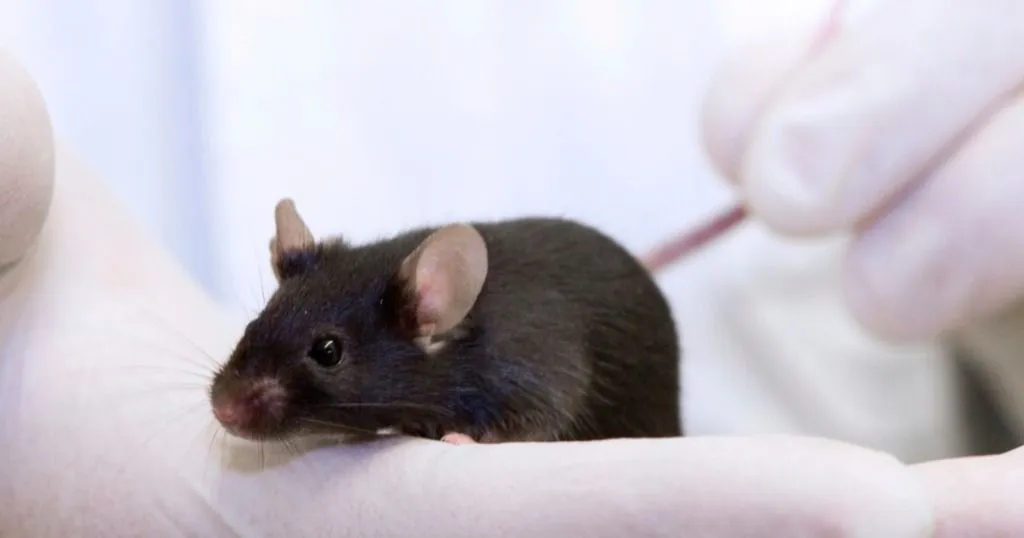
Today we are happy to share with you a guest blog post by Anne-Laure Bonnefont in which she explains how she and her colleagues developed the ArthriSM scale - a new sensory and motor scale to predict functional deficits in arthritis mouse model. Enjoy reading!
Rheumatoid arthritis
Rheumatoid arthritis (RA) is a systemic autoimmune disease, of unknown etiology that affects 1% of the adult population worldwide, making RA one of the most common chronic inflammatory diseases. RA is characterized by chronic joint inflammation and progressive destruction of cartilage and bone that lead to debilitating joint pain and severe disability1. Although numerous therapeutical approaches are currently used to alleviate symptoms, disease remission is very rare, highlighting the needs to better characterize the pathology in order to develop new therapies.
Animal models of RA
The collagen-induced arthritis (CIA) mouse model is extensively studied because it shares several pathological and immunological features with the human pathology, and allows testing innovative treatments in pre-clinical studies2. Among these treatments, Methotrexate (MTX) is the main disease-modifying drug for animal models of arthritis3,4 and patients with RA5.
In the CIA model, inflammation readouts are usually quantified using operator-dependent clinical scoring systems, based on the observation of inflamed joints and paw swelling. However, this method does not allow to detect functional deficits and no study has already established a direct and systematic relationship between clinical scoring and functional impairments.
Methods
In our study, we performed an exhaustive quantification of inflammation, pain and locomotor deficits in CIA untreated and MTX-treated animals compared to control ones. Besides, we objectively graded functional deficits over the disease course and in response to treatment.
We longitudinally screened multiple approaches to assess locomotion (open field test, CatWalk XT), sensitivity (Von Frey, Hargreaves, static weight bearing tests) and inflammation (skin temperature), and identified the most accurate tests to correlate sensory and motor deficits with disease severity, measured by clinical score.
Measuring sensory and motor deficits with CatWalk XT
Among the different tests performed, the Catwalk XT setup had the advantage to monitor pain and sensitivity in a non-invasive manner, since mice willingly and freely crossed the walkway. Therefore, without applying any extra-nociceptive stimulus, this system was able to quantify the intrinsic pain, only induced by the pathology itself. This has been a great help to us to precisely monitor both sensory and motor deficits associated with the arthritis course and in response to therapeutic treatment.
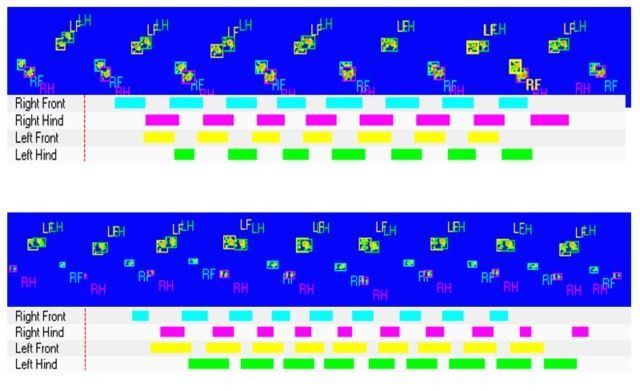
Example of walking pattern obtained with Catwalk XT in a non-arthritic mouse (upper panel) versus an arthritic one with 2 inflamed paws (right side, RF and RH, lower panel).
The parameters of pressure intensity and print areas of the right paws are highly affected in the arthritic mouse.
Results
We showed that (1) ankle bone degradation was increased in arthritic mice, (2) the skin temperature changes in arthritic mice followed the same pattern as inflammation monitored by paw swelling and (3) the thermal sensitivity, measured with the Hargreaves’ test, was significantly increased in arthritic mice compared with controls. To evaluate the correlation between arthritis severity and locomotor disabilities, we assessed dynamic gait with CatWalk XT (print area) and global locomotion with the open field test. We found that the hind paw print area progressively decreased in arthritic mice compared with controls, as well as the maximal paw pressure intensity, stance time and stride length. Also spontaneous exploratory locomotion (open field test) decreased in arthritic mice compared with controls.
Correlation of motor and sensory deficits with clinical scoring
We found that the functional disability scores obtained with the open field, CatWalk XT, Hargreaves, and skin temperature tests significantly correlated with the clinical score in CIA mice, either untreated or treated with methotrexate.
Therefore, thanks to the different technologies used, including the automated gait analysis CatWalk XT system, we could propose a new scale, namely the Arthritis Sensory and Motor (ArthriSM) scale, as a new theranostic tool to predict motor and sensory deficit based on the clinical score, in the experimental mouse model of CIA. To our knowledge, this is the first detailed correlation between clinical score and functional deficits in the CIA mouse model.
Bibliography
1. Smolen JS et al, Nat Rev Dis Primers 2018, 4:18001: Rheumatoid arthritis.
2. Kollias G et al, Ann Rheum Dis 2011, 70(8):1357-1362: Animal models for arthritis: innovative tools for prevention and treatment..
3. Koyama A et al, J Pharm Pharmacol 2017, 69(9):1145-1154: Daily oral administration of low-dose methotrexate has greater antirheumatic effects in collagen-induced arthritis rats.
4. Gillooly KM et al, PLoS One 2017, 12(7):e0181782. Bruton's tyrosine kinase inhibitor BMS-986142 in experimental models of rheumatoid arthritis enhances efficacy of agents representing clinical standard-of-care.
5. Smolen JS et al, Ann Rheum Dis 2014, 73(3):492-509: EULAR recommendations for the management of rheumatoid arthritis with synthetic and biological disease-modifying antirheumatic drugs: 2013 update.
Related Posts

Quantifying locomotion in rats using CatWalk XT
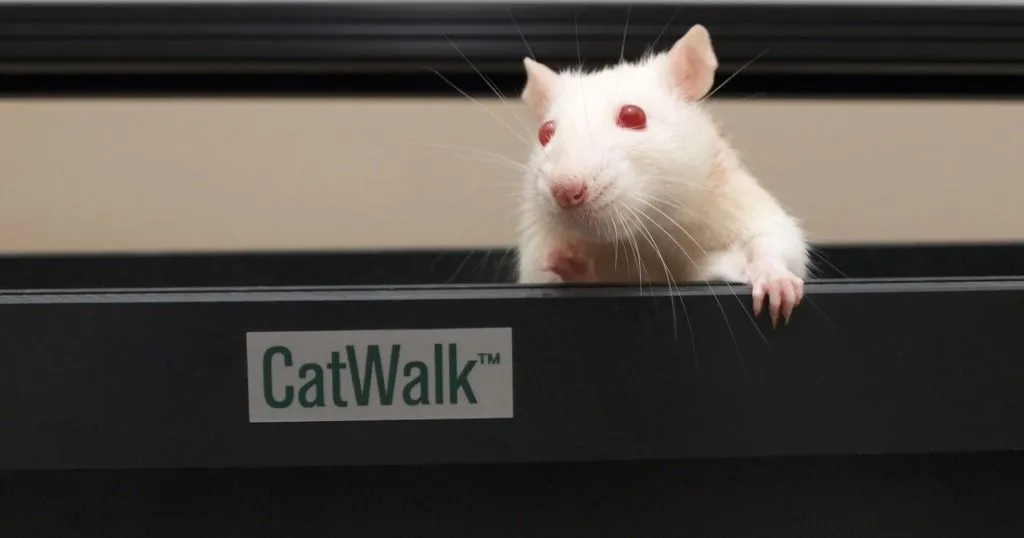
How to let rats run perfectly
